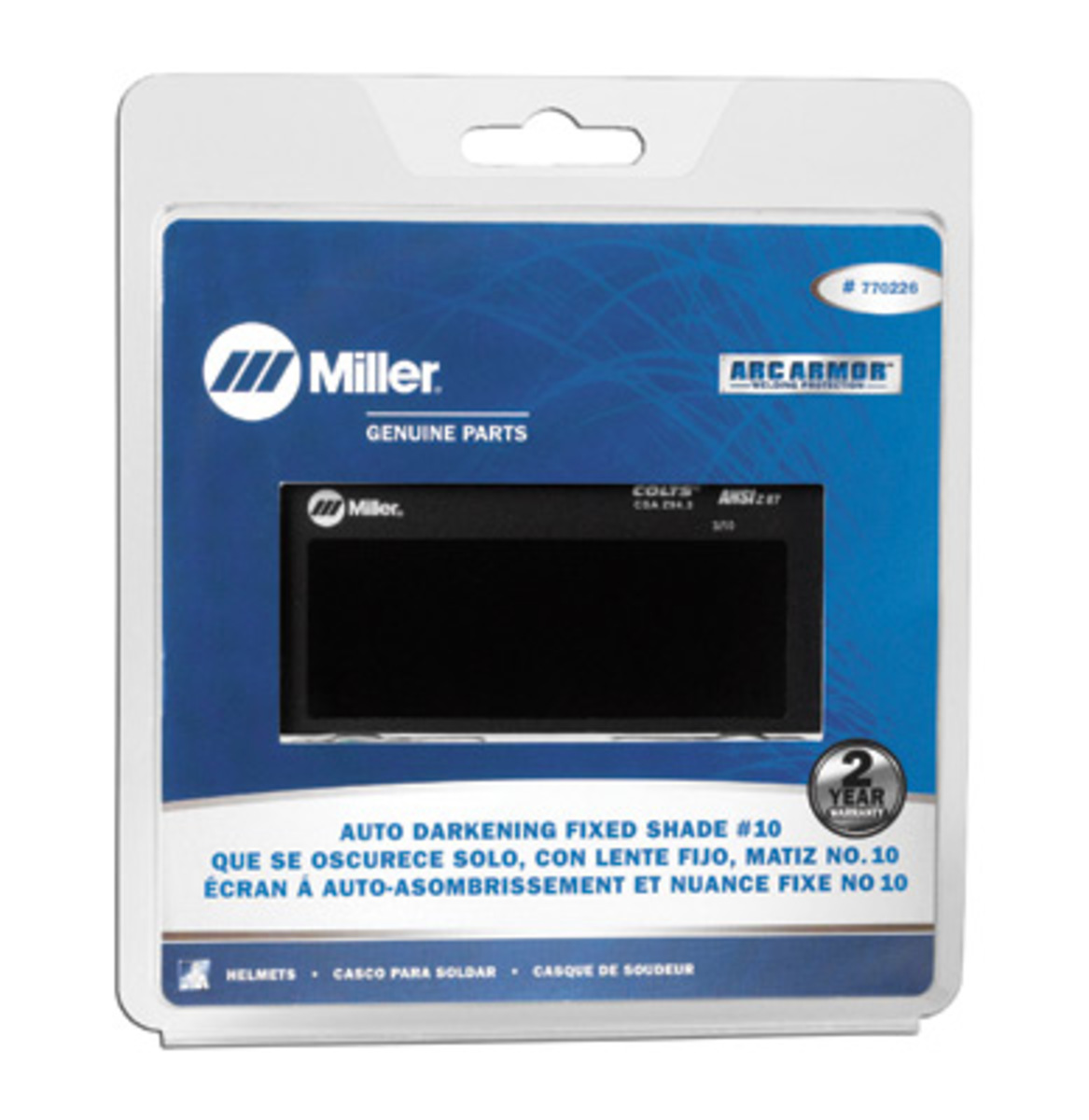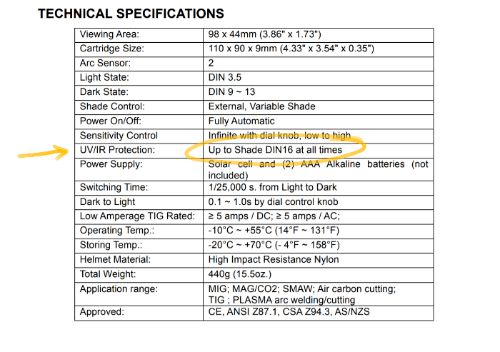

You may find helmets with advanced technologies that eliminate the interference of sunlight and that use ADF sensors.

‘Smart’ helmets come with the auto-darkening filter (ADF) sensors which darken the filter based on the sensed electromagnetic radiations coming from the welding arc. Your helmet should adopt the optical view as if most of the welding process is done in sunlight. Most of the welders mention the importance of knowing the environment because it relates to helmets’ auto-darkening capabilities. To choose the shade number, you need to know the following things about your welding process: The environment of your workspace: We recommend selecting helmets according to the safety requirements of the American National Standards Institute (ANSI). Though it will be a bit costly, it will serve you for all welding processes. Whereas, if you own a workshop or welding yard and work with different welding processes, it is better to buy the variable shade helmet. You can choose the former one if you are a professional welder of a particular welding process. In contrast, others have customized lenses with variable shade numbers. Some helmets have a filter lens with a fixed shade. The larger the shade number, the darker the filter lens.

While the shades from 9 to 13 are mainly used for different welding processes. The earlier numbers from 4 to 8 are useful in grinding and cutting processes. Welding helmet shades numbers vary from 4 to 13. Above all, keep in mind that before choosing the shade number, welding helmets should meet ANSI standards in the USA and CSA in Canada. Welding helmets come in a variety of shades according to diverse welding processes. Therefore, it will allow fewer radiations to pass through the filter lens and reach one’s eyes. It means that the helmet with a higher shade number will be darker. Usually, welding helmets have their characteristic shade number, which represents the allowable intensity of the radiation. The filter lenses on the welding helmets differentiate them from ordinary helmets. Plus, helmets protect your eyes from harmful radiations that are produced because of shielding gas’s ionization. Welding helmets also provide a shield from sparks and sharp tiny particles that may penetrate your skin. 4 Welding Helmet Lens Shade Selection Charts:Īccording to MyWeldingYard, Welding Helmets are essential for protecting yourself from harm related to fire, high voltages, and sometimes spatter of molten metal.3.3 Electrode diameter of your welding gun or machine:.3.2 Operating Current range of the welding process:.


 0 kommentar(er)
0 kommentar(er)
